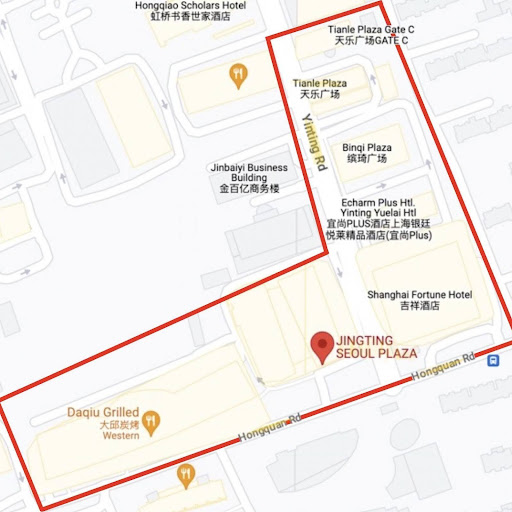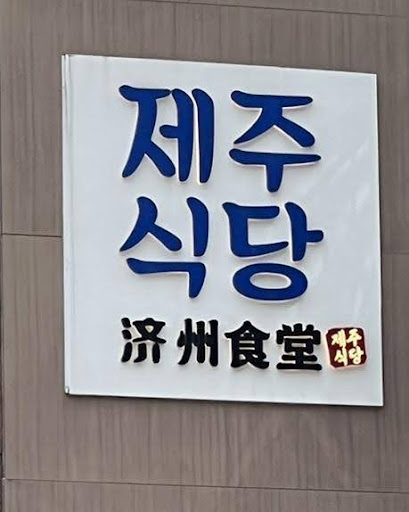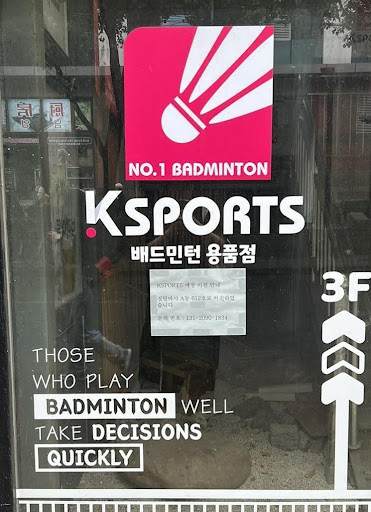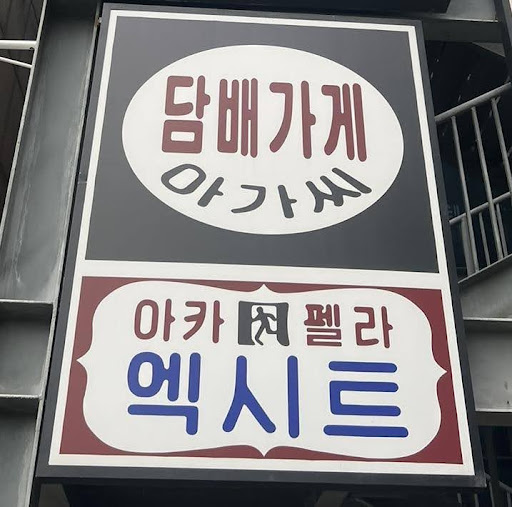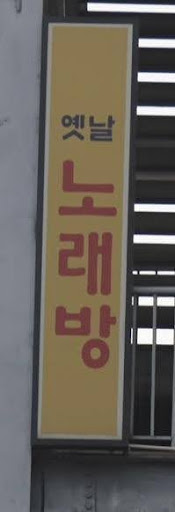
Weapons of the Weak: How Women’s Apparent Submissiveness Undermines Confucian Patriarchy’s Pervasive Control in Lessons for Women and Raise the Red Lantern
Photo “NA” by Annie Church
by Julie Wu
Read the Faculty Introduction.
In his widely celebrated film Raise the Red Lantern, Zhang Yimou portrays the withering of concubines in their toxic competition for the master’s sexual favor in early twentieth-century China, lamenting over patriarchy’s ferocious enslavement of women’s sexuality. Among all the victims mired in endless torment, the fourth mistress Songlian, an assertive former college student, bizarrely complies with sexually exploitative rituals in the traditional Chinese courtyard (Zhang). However, beneath Songlian’s façade of everyday subservience lies her agenda to seize control of the household through the master’s sexual partiality. The ambivalent power dynamics underlying women’s ostensible submissiveness also occur in Lessons for Women composed by Ban Zhao, the most influential female scholar in the Eastern Han dynasty. In this behavior manual for young wives, Ban pedagogically appeals to her female descendants to abide by oppressive Confucian norms in the household. Yet, her simultaneous advocacy of education for women substantially challenges the then-Confucian doctrine. A close examination of Songlian and Ban Zhao’s seemingly paradoxical deeds reveals that women’s apparent obedience in Confucian patriarchy not only helps them reconcile their existence but also empowers them to subtly undermine the omnipresent oppressive forces.
Confucian discourse permeated the social fabric of the Eastern Han dynasty, the time when mainstream scholars established women’s subordination to men as both natural and fundamental to the “ordering of society,” as Lin-Lee Lee insightfully describes in “Inventing Familial Agency from Powerlessness: Ban Zhao’s Lessons for Women” (L. Lee 52). Ban’s narrative in Lessons for Women echoes this suppressive trend in her justification of the wife’s unconditional submission to the husband. In chapters two and three, Ban compares the relationship between the husband and the wife to that between “yang and yin,” two antithetical yet interrelated principles regulating the natural world in Chinese culture (Swann 180). As she claims, the quality of yin that women represent in the male-female relationship is inherently “yielding” (Swann 181). Here, Ban delineates submissiveness as women’s intrinsic attributes by adopting the “essentialist gender definitions” that Jana Rošker observes in “Confucian Humanism and the Importance of Female Education: The Controversial Role of Ban Zhao” (Rošker 25). This narrative helps Ban rationalize the wife’s absolute subordination to the husband, as she argues that the “natural order” of the family would be disrupted if the wife fails to “serve her husband” (Swann 181). In short, in Lessons for Women, Ban not only complies with but also staunchly supports the dominant Confucian discourse by advocating for women’s subservience in domesticity.
However, a close examination of Ban’s life trajectory reveals her compliance as a strategy to terms with the social pressure imposed on her special identity. With a prestigious family background and profound knowledge of Confucian classics, Ban ascended to great political power as a lead royal consultant for Empress Deng (Rošker 26). At that time, considering the Confucian zeitgeist’s reluctance to women’s involvement in “traditionally masculine activities” (L. Lee 52)—for example, Ban’s political clout in her alliances with Empress Deng could easily provoke male politicians’ antagonism (Rošker 27). Facing the imminent threat to her political career, Ban’s “public acknowledgment” of women’s secondary status in society outwardly expresses her “loyalty towards the patriarchal state,” as Rošker analyzes in her discussion of Ban’s obedience to Confucian rules (Rošker 27). Hence, Ban’s allegiance to patriarchal values on the surface conceals the subversive aspect of her participation in politics, shielding herself from social restrictions.
Concurrently, not only driven by her personal interest, Ban’s apparent submission deliberately undermines Confucianism’s hegemonic constraints on women’s education. The Book of Rites, the accoladed orthodox Confucian classics in ancient China, explicitly states that “only male children should be educated” (qtd. in Rošker 27). To chisel away this rigorous principle without provoking a widespread backlash, Ban capitalizes on the Confucian scholars’ emphasis on the indispensability of a stable marriage in maintaining social order. In Lessons for Women, Ban states that education for girls equips them with “proper customs for married women” (Swann 179). Without knowledge of regulated rituals, as she claims, the wife would not know how to “serve her husband,” thus destroying the “harmony and intimacy” of the marriage (Swann 184). Here, Ban argues that education helps foster “a submissive wife, and an ideal member of her marital family” (L. Lee 55), whose virtue would contribute to a harmonious family and thus consolidate the stability of the society. Hence, leveraging the importance of women’s education to the ritual-regulated Confucian household and society, Ban subtly undermines a pillar of gender subordination during the Eastern Han period.
The Eastern Han dynasty marked the near-total subjugation of women, requiring them to exert immense effort to attain any semblance of agency. Almost two thousand years after, as the 1911 revolution toppled the Qing dynasty, marking the end of Chinese monarchy, the 1920s witnessed unprecedented progress for women’s liberation, especially in education. As Lianfen Yang documents in “New Ethics and Old Roles: The Identity Dilemma of May Fourth New Women,” the May Fourth movement played a pivotal role in promoting nationwide “co-education [of men and women] at college and social intercourse between sexes” (74). Despite the emergence and thriving of “equality” and “freedom” discourses in urban areas, the vestige of Confucian value still prevailed in traditional Chinese courtyards, mandating women’s “three obedience [to husband, father and son] and four virtues” (Yang 75). Through Songlian’s story, the film Raise the Red Lantern manifests the tension between Confucian social practices and burgeoning revolutionary values that women grappled with in 1920s China. As a former college student forced to become a concubine for a landlord, Songlian gets inundated with these patriarchal values the moment she enters the Chen compound.
Zhang portrays Songlian’s gradual submission to the sexually exploitative norms in Chen’s compound through his directorial emphasis on the shift of her facial expressions. In Chen’s family, foot massage serves to arouse mistresses’ sexual desire by stimulating their sensitive and private body parts, preparing them to “better serve their man” on the bed (Zhang). Here, women’s sexuality simply constitutes a tool to satisfy the master’s desire, implying the asymmetrical sexual relationship between the master and the mistresses. In both foot massage scenes, Zhang juxtaposes close-up shots of Songlian’s face with the resonating tinkling sound of the massage tools in the background. The change in Songlian’s facial expression thus becomes the sole distinctive element in the two scenes. In Songlian’s first foot massage, she almost imperceptibly frowns her eyebrows with the corners of her mouth turning down, indicating her discomfort (Zhang). Her micro-expressions ground in her aversion to this custom that abruptly stimulates her sensitive parts in front of other people. As Songlian accustoms herself to this exploitative ritual in the household and realizes the sexual privilege this custom embodies, her facial expression experiences a drastic change. The second time Songlian receives the foot massage, she fully closes her eyes with her shoulder relaxed, slowly and deeply inhaling (Zhang). Songlian’s compliance with and even enjoyment of the foot massage implies her “passive demeanor,” as Joann Lee observes in “Zhang Yimou’s Raise the Red Lantern: Contextual Analysis of Film Through a Confucian/Feminist Matrix” (122). The shift in Songlian’s reaction to the foot message thus marks her acceptance of the sexually exploitative norms operating in the courtyard’s arrangement of concubines’ life.
By submitting to sexual exploitation and catering to the master’s sexual appetite, Songlian seems to transform into a soulless puppet manipulated by oppressive norms in Chen’s household. Yet, in essence, she strategically uses submission to cope with the conflicts between her past freedom as a college student and her present imprisonment as a concubine. Songlian’s dilemma culminates in her interactions with Feipu, the master’s son with the privilege to attend college. In their first encounter, Feipu directly addresses Songlian by her name when all other people in the courtyard call her fourth mistress. Surprised by Feipu’s recognition of her individuality, Songlian directly stares at him in the face with reserved joy (Zhang). Here, the conversation drags Songlian out of the competition for the master’s sexual favor, reminding her of her past autonomy. Yet, the sparkle immediately extinguishes as Songlian says: “you should not call me by my name,” with her eyes drifting away in melancholy and embarrassment (Zhang). In this scene, Songlian’s sorrow originates in the Confucian household’s relentless annihilation of her freedom: after the transient sense of escape from reality, eternal enslavement awaits. The camera’s occasional shift from the medium close-up shot of Songlian and Feipu to the long shot of the enclosed courtyard they are situated in, along with the low-key lighting, echoes this reality. By reminding Feipu of her status, Songlian submits to her irrevocable and suffocating marital bond with the master, accepting her identity as the fourth mistress. Hence, Songlian chooses submission as a coping mechanism to subdue her longingness for college life and freedom.
Behind Songlian’s apparent submission also lies her attempt to break away from the ever-present constraint inflicted upon her in the household. In the Confucian household, the male master not only plays the role of the husband but also “the patronizing father” whom “all the power” in the household derives from (J. Lee 121-123). In this specific cultural background, from a psychoanalytic perspective, “power is male, is phallus” (J. Lee 123). Then, in this case, only through alliances with male power can Songlian seize agency amidst patriarchy’s pervasive control. In the film, Songlian temporarily succeeds by tricking the master with her feigned pregnancy (Zhang). With patriarchy’s obsession with reproduction, Songlian’s “pregnancy” indicates that she has the master’s “seeds” in her, helping her generate much stronger power than simply catering to the master’s sexual appetite (J. Lee 123). Thus, she could enjoy a foot massage whenever desired, humiliate her maid, have her lanterns lit all day long, and order the second mistress to massage her like a servant (Zhang). By “enforcing these customs and rules on other less powerful women in the household,” Songlian receives privileges from the source of male (J. Lee 121). In short, Songlian retains temporary release from the suffocating oppression of the Confucian household through the manipulation of patriarchal rules and alliances with male power.
However, having been exposed to the taste of true freedom during her short stay at the university, Songlian’s strategy is doomed to fail. Approaching the end of the film, Songlian accidentally blurts out the secret that Meishan, the third mistress, has been cheating on the master, directly leading to the cruel execution of Meishan (Zhang). Witnessing the horrendous death of Meishan, Songlian realizes the impossibility of reaching substantial agency as a female subordinate in the Confucian compound. Her rage against the brutal patriarchal system coupled with her lifelong incarceration ultimately drives Songlian to hysteria. As she becomes the “walking ghost” (J. Lee 126) aimlessly pacing back and forth in the courtyard with her student outfit on and braids, her lunacy helps her escape the cruel reality, bringing her mind back to college life. Zhang’s intensive use of red in these scenes signifies both the madness of Songlian and the relentless and devouring nature of Confucian patriarchy. Hence, even through her strategies of submission to and manipulation of patriarchal norms, Songlian still fails to reconcile her existence in the courtyard and claim autonomy of her life.
A juxtaposition of Lessons for Women and Raise the Red Lantern unveils that while submission helps women living in absolute subordination partially seek some rights within the system, what they have gained still contains limitations. In Lessons for Women, Ban strategically appeases the dominant Confucian scholars who may vehemently oppose the education of women with her obedient tone. Strictly adhering to the patriarchal principle of women’s subordination to men, Ban successfully calls for the education of women. Ban’s subservience helps chisel away an important pillar of the suppression of women in the Eastern Han dynasty. However, concerning the restrictions imposed by the rigorous patriarchal order at that time, Ban’s agency remains within the patriarchal system, failing to step further. Almost two thousand years later, despite the all-around advancement of society, Confucian patriarchy still reigned in the household. Songlian in Raise the Red Lantern adopts the same strategy as Ban to reconcile her desire for freedom with the oppression in real life. Yet, she attempts in vain to manipulate the patriarchal rules for her own interests, which the failure of her feigned pregnancy and her ultimate madness exemplify (Zhang). Women’s persevering yet bitter struggle for the limited agency that Lessons for Women and Raise the Red Lantern portray seems to be far away from the contemporary world: women are no longer prohibited from entering the public sphere or considered as absolute subordinates to men in China. However, the analysis here entails implications stretching beyond gender inequality to conformism embedded in the Chinese context. As Hsiu-Chuang Deppman analyzes in “Body, Space, and Power: Reading the Cultural Images of Concubines in the Works of Su Tong and Zhang Yimou,” in Raise the Red Lantern, Zhang uses a “critical-realist approach” to delineate people’s everyday life in the current society (126). In this sense, the overwhelming and omnipresent Confucianism that Ban and Songlian submit to sneakily finds new expression in contemporary China, encroaching upon everyone. Society can create a perfect illusion that true egalitarianism would be achieved as long as people temporarily sacrifice their own interest and submit to its order, beguiling every individual into unconditional conformity. Perhaps, what Zhang attempts to warn us in the movie is that: conformism might grant us temporary agency, but what we cede to the subjugator may in turn empower it to ferociously devour us.
Works Cited
Deppman, Hsiu-Chuang. “Body, Space, and Power: Reading the Cultural Images of Concubines in the Works of Su Tong and Zhang Yimou.” Modern Chinese Literature and Culture, vol. 15, no. 2, 2003, pp. 121–53.
Lee, Joann. “Zhang Yimou’s Raise the Red Lantern: Contextual Analysis of Film Through a Confucian/Feminist Matrix.” Asian Cinema, vol. 8, no. 1, Mar. 1996, pp. 120–27. intellectdiscover.com, https://doi.org/10.1386/ac.8.1.120_1.
Lee, Lin-Lee. “Inventing Familial Agency from Powerlessness: Ban Zhao’s Lessons for Women.” Western Journal of Communication, vol. 73, no. 1, Feb. 2009, pp. 47–66. Taylor & Francis Online, https://doi.org/10.1080/10570310802636318.
Rošker, Jana S. “Confucian Humanism and the Importance of Female Education: The Controversial Role of Ban Zhao.” Asian Studies, vol. 9, no. 1, Jan. 2021, pp. 13–29. journals.uni-lj.si, https://doi.org/10.4312/as.2021.9.1.13-29
Swann, Nancy, translator. “Lessons for Women.” By Ban Zhao. Images of Women in Chinese Thought and Culture: Writings from the Pre-Qin Period through the Song Dynasty, edited by Robin R. Wang, HackettPublishing Company, 2003, pp. 177-188.
Yang, Lianfen. “New Ethics and Old Roles: The Identity Dilemma of May Fourth New Women.” Translated by Feng Shize. Social Sciences in China, vol. 33, no. 1, Feb. 2012, pp. 71–91.
Zhang, Yimou, director. Raise the Red Lantern. Era International (HK) Ltd., 1991.

